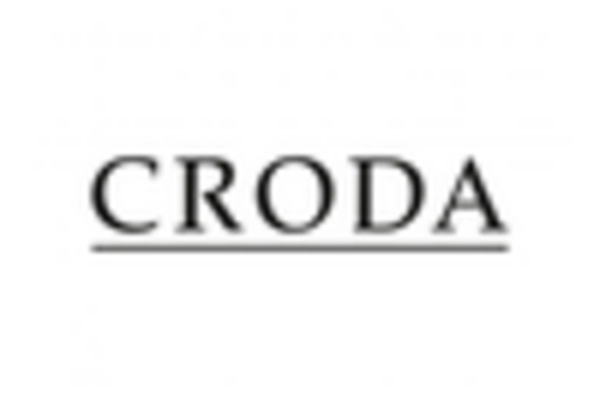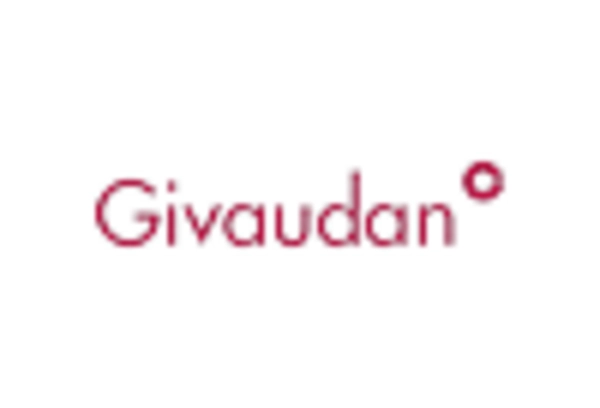Shift Towards Clean Beauty
The Natural Cosmetics Ingredients Market is witnessing a pronounced shift towards clean beauty, characterized by a preference for products that prioritize safety and environmental responsibility. Consumers are increasingly scrutinizing ingredient labels, seeking formulations that are free from harmful chemicals. This movement is reflected in the rising popularity of clean beauty brands, which emphasize transparency and ethical sourcing. Market analysis indicates that the clean beauty segment is expected to grow at a compound annual growth rate of over 10% in the coming years. This trend is likely to bolster the Natural Cosmetics Ingredients Market as more consumers gravitate towards brands that align with their values.
Increased Focus on Sustainability
The Natural Cosmetics Ingredients Market is experiencing an increased focus on sustainability, driven by consumer demand for eco-friendly products. Brands are responding by sourcing ingredients responsibly and adopting sustainable packaging solutions. This trend is not merely a passing phase; it reflects a fundamental shift in consumer values towards environmental stewardship. Data suggests that over 60% of consumers are willing to pay more for sustainable products, indicating a strong market potential. As sustainability becomes a key differentiator in the cosmetics sector, the Natural Cosmetics Ingredients Market is poised for growth as companies innovate to meet these evolving consumer expectations.
Rising Demand for Organic Products
The Natural Cosmetics Ingredients Market is experiencing a notable increase in demand for organic products. Consumers are becoming more discerning, seeking out cosmetics that are free from synthetic chemicals and harmful additives. This shift is driven by a growing awareness of the potential health risks associated with conventional cosmetics. According to recent data, the organic personal care market is projected to reach a valuation of approximately 25 billion dollars by 2027, indicating a robust growth trajectory. This trend is likely to propel the Natural Cosmetics Ingredients Market as brands strive to meet consumer expectations for transparency and sustainability in their ingredient sourcing.
Influence of Social Media and Influencers
The Natural Cosmetics Ingredients Market is significantly influenced by social media platforms and beauty influencers. These channels serve as powerful tools for educating consumers about the benefits of natural ingredients, thereby driving demand. Influencers often share personal experiences and product recommendations, which can lead to increased consumer interest in natural cosmetics. Recent studies indicate that nearly 70% of consumers are more likely to purchase a product endorsed by an influencer they follow. This trend suggests that the Natural Cosmetics Ingredients Market could experience accelerated growth as brands leverage social media marketing strategies to reach a broader audience.
Regulatory Support for Natural Ingredients
The Natural Cosmetics Ingredients Market benefits from an evolving regulatory landscape that increasingly favors natural ingredients. Governments are implementing stricter regulations on cosmetic formulations, encouraging manufacturers to adopt safer, more environmentally friendly practices. For instance, the European Union has established guidelines that promote the use of natural and organic ingredients in cosmetics. This regulatory support not only enhances consumer trust but also incentivizes companies to innovate and reformulate their products. As a result, the Natural Cosmetics Ingredients Market is likely to see a surge in the adoption of compliant natural ingredients, fostering growth and sustainability.

















Leave a Comment